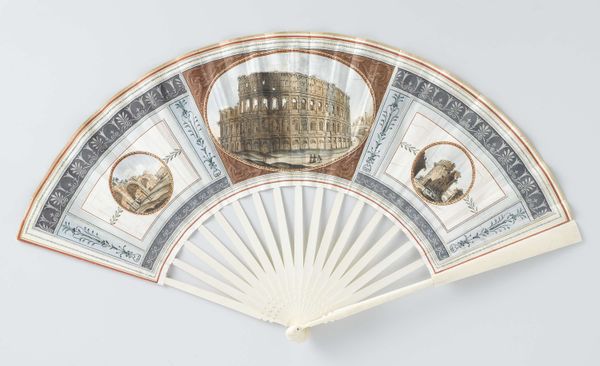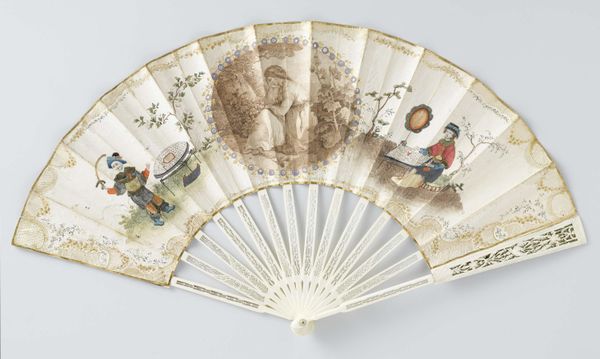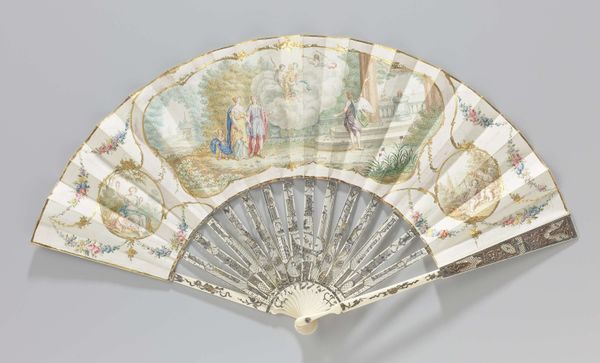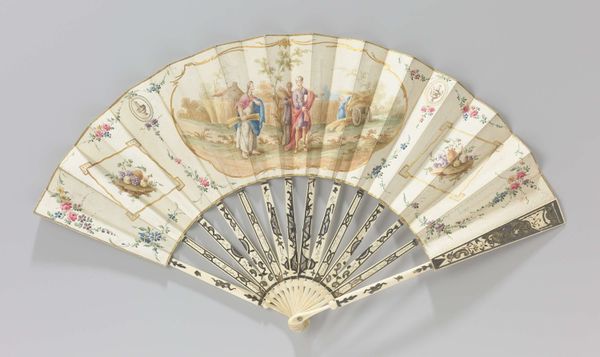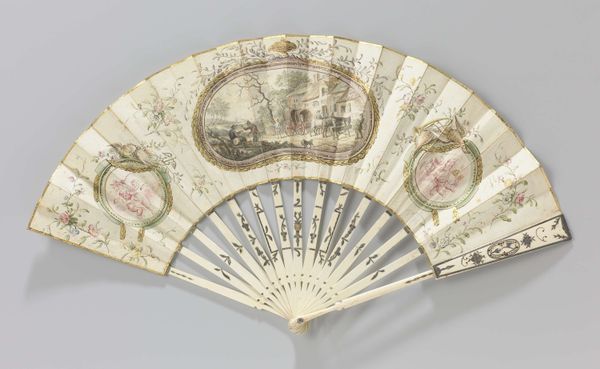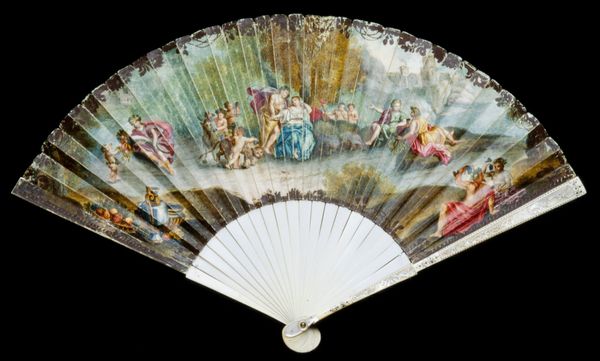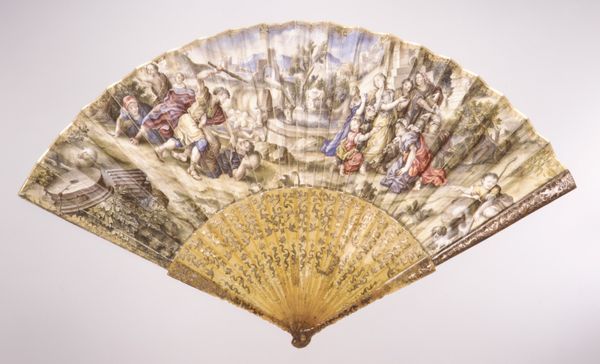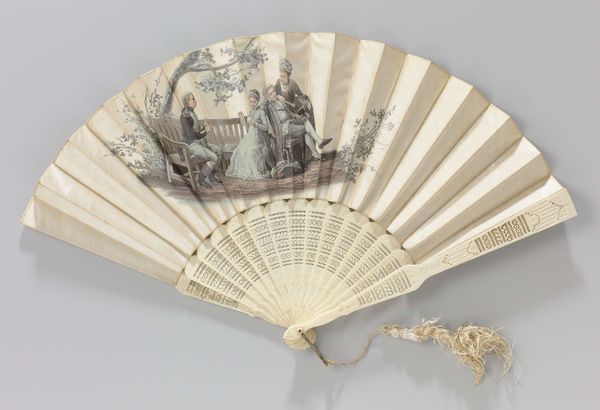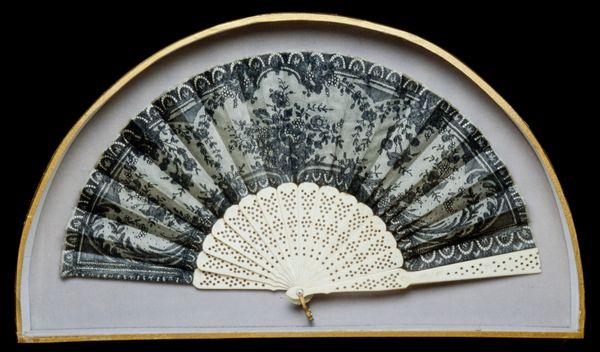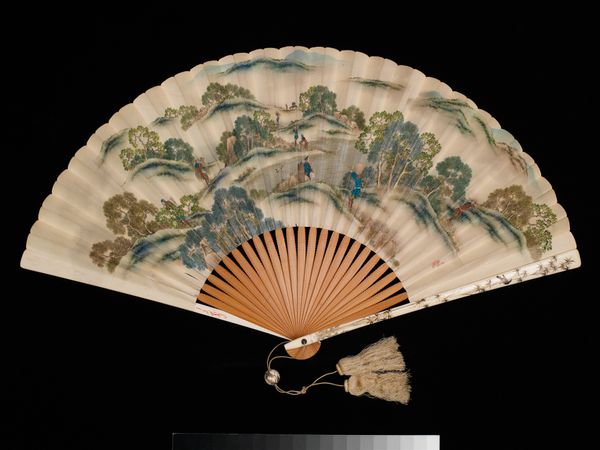
drawing, mixed-media, print, paper, sculpture
#
drawing
#
mixed-media
# print
#
impressionism
#
sculpture
#
landscape
#
paper
#
sculpture
#
orientalism
#
cityscape
#
decorative-art
Dimensions: 10 3/8 x 19 3/4 in. (26.4 x 50.2 cm)
Copyright: Public Domain
Curator: We are looking at an exquisite mixed-media fan from 1885, currently residing here at the Metropolitan Museum of Art. Editor: My first thought? It’s so… restrained. The delicate paper, the muted palette. There’s a curious tension between its ornamental purpose and the detailed cityscape depicted. Curator: Precisely. The intrinsic design elements guide the eye along its radial symmetry. The repeated arches of the building in the image complement the physical curvature of the fan, creating a unified aesthetic experience. It's a fascinating interplay of form and representation. Editor: Fascinating indeed, if we ignore the social implications of a decorative object displaying such an image. Fans, as material objects, were signs of status and often sites of labor. Depicting cityscapes flattens the lives involved in manufacturing the paper, pigments, and frame… Curator: But consider how the image of the built environment—perhaps the Crystal Palace—reflects contemporary societal ambition and technological advancement! The structural integrity mirrors that ambition! Editor: Or perhaps serves as a gentle reminder of the inequalities embedded within rapid industrialization and consumption? One has to consider how something as simple as ventilation, once an embodied labor, becomes mediated by a cultural artifact such as this. Who does it serve? Curator: Perhaps, then, its significance arises from the tension between decorative purpose, aesthetic composition, and the subtle sociopolitical commentary it subtly communicates. The fan blades draw one into the details within the images printed upon them. Editor: True, and observing these items through time also reveals how such material goods become cultural commodities themselves, transforming meanings within shifting systems of labor and class. Curator: I see your point entirely, it underscores the piece’s conceptual layering, how it simultaneously adorns and comments on the Gilded Age. Editor: Indeed, these sorts of artifacts force us to reconsider our assumptions, reminding us to look past surfaces to interrogate deeper cultural and socioeconomic systems at work.
Comments
No comments
Be the first to comment and join the conversation on the ultimate creative platform.


